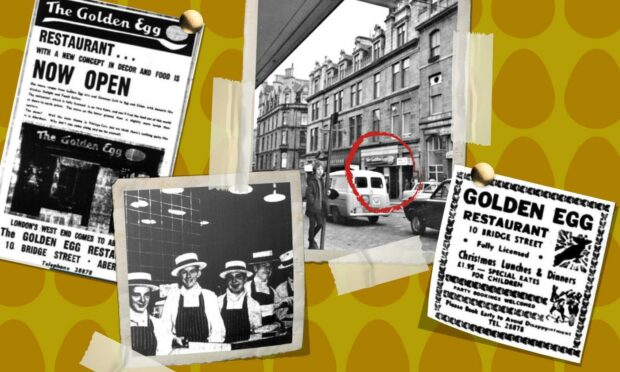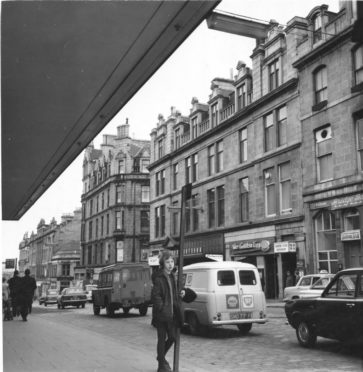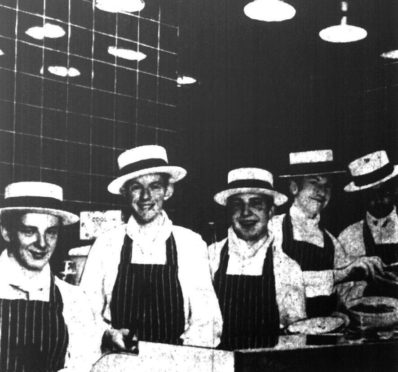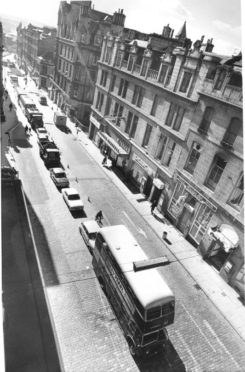If you took a wander down Aberdeen’s Bridge Street in the late 1960s, you’d have been spoilt for choice when it came to dining out.
Promising “a gourmet’s paradise”, the latest addition, the Golden Egg restaurant brought a taste of London’s West End to Aberdeen City Centre when it opened in 1967.
A reader who frequented the Golden Egg in his youth has been in touch wondering whether Aberdeen Journals’ archives could help jog a few memories about this once-popular, but long-gone diner.
Many Aberdonians will recall an evening at the theatre and a slap-up meal at the Golden Egg afterwards, we take a look back at the golden years of this Bridge Street institution.
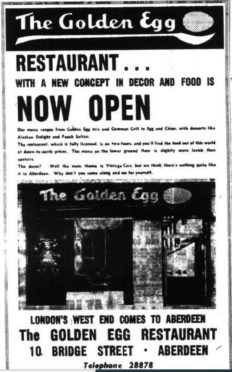
What was the Golden Egg?
The Golden Egg brought a modern and “new concept of decor and food” to Aberdeen in the Swinging Sixties.
All the rage in London, which had 30 branches, the Granite City was the first restaurant in the Golden Egg franchise to open in Scotland.
Seeing the success of the restaurant down south, two businessmen opened one at 10 Bridge Street in August 1967, nowadays Richi’s Cafe.
It may be hard to imagine these days, but the now run-down Bridge Street was described as “the in street for eating out” in the 60s.
The businessmen were asked if they felt intimidated by “the extreme competition” in the neighbourhood, but said “it doesn’t worry us in the slightest – we will be providing something quite different from any other restaurant in Aberdeen”.
They were confident that as “a product of London’s West End”, the newest Golden Egg was “almost certain to catch on in a big way in the north-east”.
Gourmet gammon
The Golden Egg claimed to be the most modern eating house in the Granite City, “providing the public with a wide range of good things to eat and drink at competitive prices and in luxury and comfort”.
Seating 130 diners across two floors, the Golden Egg was a busy and cosmopolitan venue, offering egg-heavy quick snacks and full-scale meals for gourmets.
Its giant, novelty egg-shaped menus promised “out of this world food at down to Earth prices”.
Employing no fewer than 40 staff, they included “griddlers in smart, striped aprons and waitresses in yellow smocks” to ensure all dishes were served piping hot on special skillets.
And in 1967, the gourmet dishes on offer ranged from a fry-up called the Golden Egg Mix to the gammon grill, to the salmon triumph to good old egg and chips.
Puddings included the Jamaican longboat – a banana split with cream – for three shillings, Alaskan dessert for two shillings, and Peach Sultan.
One of the specialities on the menu was roast ribs of beef with jacket potatoes and Yorkshire pudding, while mixed grills and steaks also proved popular.
Eccentric decor
It wasn’t just the cuisine that was different – the “wildly extravagant” decor was quirky too.
Diners of yesteryear may recall the unique vintage vehicle interior design theme that adorned the walls.
A special wall feature on the “fully carpeted” lower ground floor was huge replicas of cars seen in Aberdeen during the 1910s.
But the vintage theme didn’t continue from the walls to the ceiling.
Breaking all modern day fire safety regulations, the Golden Egg had a very 1960s polystyrene ceiling.
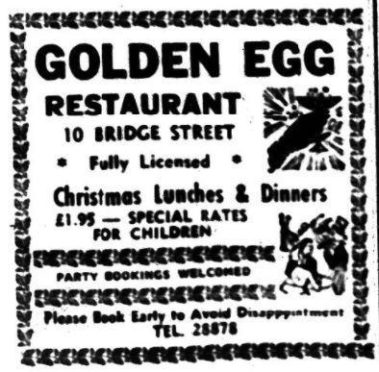
The polystyrene was installed in such a way that it created a “bright and decorative cartwheel design”.
And if that wasn’t enough to marvel at, “the main feature” in the room was a “28ft-long mural incorporating a cogwheel design in polystyrene superimposed on perspex”.
Meanwhile, ready to greet diners at the front of the restaurant was a colourful court jester figurine – made from toughened polystyrene.
A mixture of copper and brass lighting was used to create an ambient atmosphere to tone in with Italian-designed ceramic tiles which were “laid in an unusual way on the banquet tables, combining antiquity with the modern”.
What happened to the Golden Egg?
But the restaurant did prove to be a hit, and by the 1970s there was a second branch in Aberdeen.
In 1970, the franchise had been bought over by J Lyons, which also owned Wimpy International.
The Golden Egg opened a second restaurant at 198 Union Street; these days it is an empty unit in the 1960s development near the Music Hall.
Three Wimpy bars also opened as part of the Lyons’ expanding empire of eateries in the north-east, at 18 Bridge Street, 31 Union Street and High Street, Elgin.
In 1980, the four restaurants changed hands and it was around this time the Union Street branch of the Golden Egg closed.
The following year, the tables and chairs from the defunct restaurant went on to have an unexpected new lease of life – at the Roman Catholic Seminary on Deeside.
Furniture and other fittings from the restaurant helped to create a new cafeteria at the newly renovated Blairs College.
But what happened to the Bridge Street Golden Egg is slightly less clear.
Although Aberdeen had oil, the UK entered a severe economic recession in 1980-81 and inflation and unemployment were high, it seems to be around this time the chain departed many high streets.
Certainly by 1982, the premises at 10 Bridge Street in Aberdeen was now a gift shop, and in the mid-80s it was joined by a sweet shop and Photo Factory.
These days, JD Wetherspoon is probably the most comparable culinary experience and can be found in most towns and cities across the UK.
Are there any bygone restaurants or venues in Aberdeen that you would like the Nostalgia team to look into? Contact us at: nostalgia@dctmedia.co.uk
Food halls, fundraising and festivities: Remembering popular Aberdeen shop BHS
